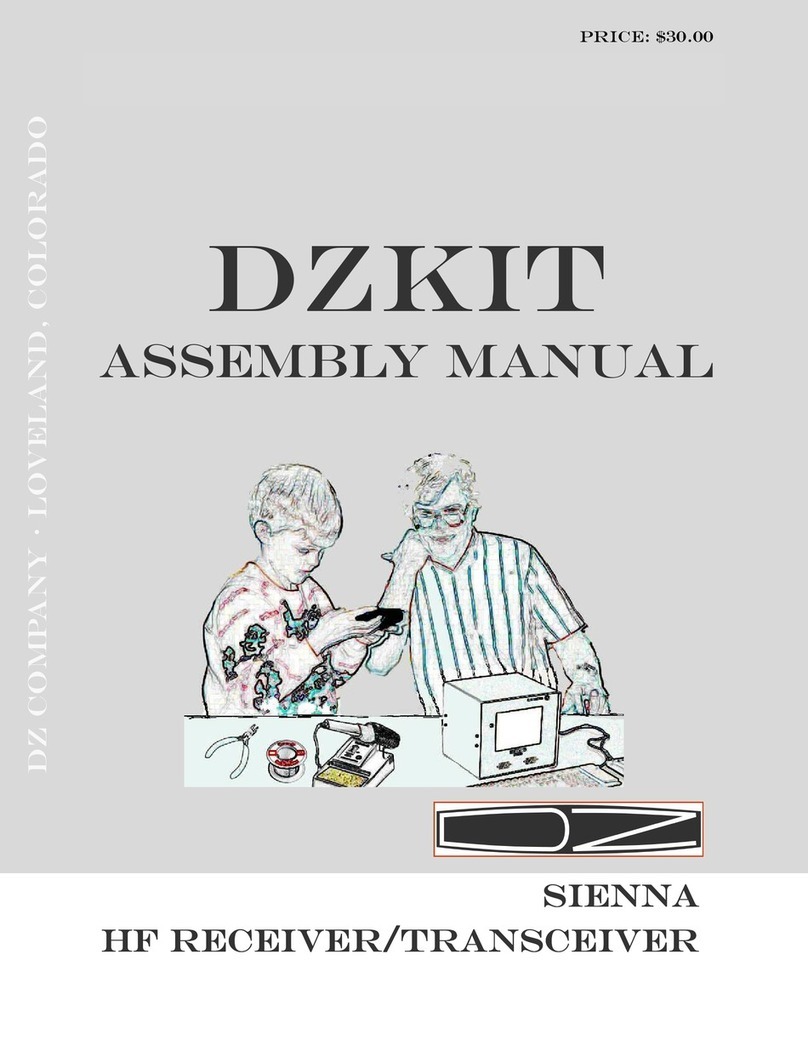
Page 10
Frequency range: 10 kHz to 30 MHz (Specs valid 500 kHz-30 MHz)
Modes: SSB, CW, AM, FM, (Digital via optional embedded PC)
FM modulation: frequency modulated carrier with pre-emphasis, selectable deviation (2.5,
4, 5kHz)
FM receive IF: 455kHz, includes two ECS LTM455DU 4-pole +/-10KHz ceramic filters
(can be replaced with filters as narrow as +/-3KHz)
Sensitivity: 0.4uV for 10dB S/N (preamps off, PSBTM off)
MDS (PSBoff): -120/-128/-132dBm (preamps: off/1/both)
MDS (PSBon): -125/-130/-132dBm (preamps: off/1/both)
BDR: >105dB at spacings greater than 1KHz, >125dB at >4KHz spacings with optional
Inrad roofing filter
Tx IMD: 3rd order: -40dB PEP @ 10W output, -36dB @ 100W, 5th order down > 50dB
Noise Blanker: Variable threshold
Freq stability: +/-1 ppm (0-50C) after 30 minute warm-up, using included TCXO
Displayed resolution: 1 or 10 Hz (internal resolution is sub-Hz)
Tuning step size: 1, 10, 100, 1K, 10K Hz
RIT, XIT range: +/-16MHz, with two speeds
Memories: 147, including 85 programmable GP memories preset to desired bandplan, one
scratchpad preset to WWV, all accessible using external keypad or PC, 5 VFOA memories
per band and one VFOB memory. 10 12-character CW buffers, editable in menu, activated
from external keypad. Farnsworth timing selectable from menu.
Mic input impedance: 200-1K Ohms
IF frequencies: 70.455 or 70.000 MHz, 9.0 MHz, 455 kHz
IF Filter selection: (see Inrad web site for filter specs) NOTE: Inrad filters must be
mounted on Yaesu-compatible "C" boards. If ordering directly from Inrad, be sure to
specify this option. Broadband IF frequency output: 455Khz +/-250KHz, 50 ohms
Transverter output: max 0dBm (1mW, 50 ohms)
Stereo audio output power: 1.5W/ch (available even while using headphones)
Linear control outputs: QSK via high-power MOSFET, TTL band data, ALC (range 0 to
-5v)
DSP (DSP - autonotch, variable bandwidth filters, NR, AGC) software from Silicon Pixels
included with PC option
DC power requirements: 2.5A receive (10-15v), 6A transmit @10W, 26A transmit
@100W output (13.8-15V), PC adds 1 or 2A depending on model
Dimensions: 3.5"H x 14"W x 16"D (feet located in a 12.25" x 14.0" area)
Weight: 10 lbs (base unit), 12.5 lbs with 100W amp and PC
Specifications subject to change without notice.
Specifications































